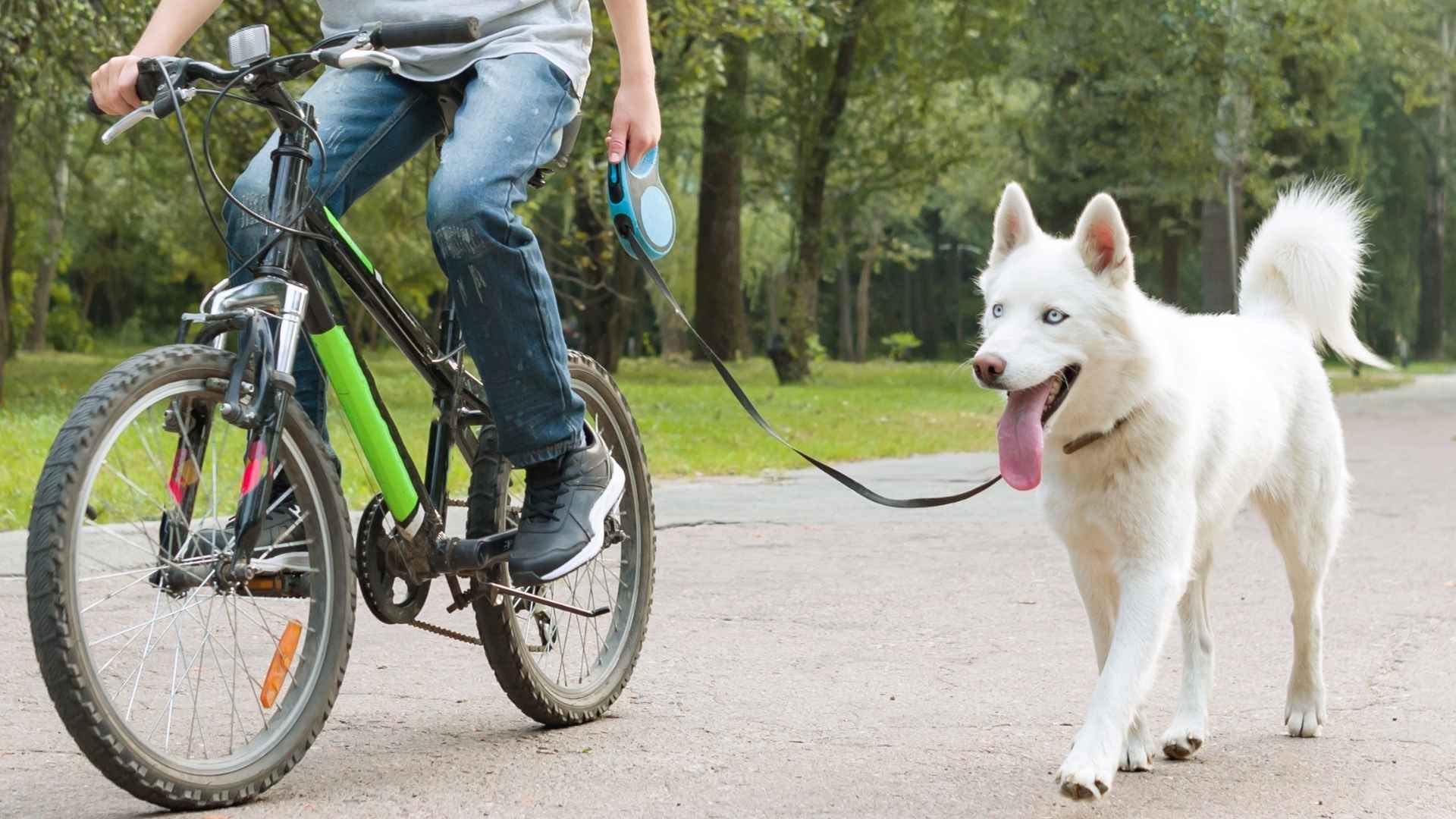A dog running alongside a child on a bike is more than a sweet scene—it’s a sign of a well-matched companion. Some dog breeds have the energy, stamina, and temperament to keep pace safely with biking kids, turning daily rides into shared adventures. If your family loves the outdoors and your children are active, choosing a breed that thrives on movement and bonding is key.
This list features dog breeds that combine athleticism with patience and trainability, making them ideal biking buddies for families. These aren’t just fast runners—they’re smart, responsive, and well-suited for households with children. Whether you’re a seasoned dog owner or bringing home your first family pup, these breeds offer both companionship and outdoor fun.
Did you know? Dogs that run regularly with kids often have improved behavior and reduced anxiety.
Let’s take a look at the breeds that can keep up with two wheels and young riders.
Dog Breeds That Love Running Beside Kids On Bikes
1. Weimaraner
Originally bred in Germany for big-game hunting, the Weimaraner is built for endurance and speed. Their lean, muscular build allows them to run long distances, making them excellent companions for active families with older children. These dogs love to move and will eagerly keep pace beside a child on a bicycle.
Weimaraners form deep bonds with their human family members and do best when included in daily activities. According to the American Kennel Club, they’re highly intelligent and responsive to consistent training. Early obedience work helps channel their energy constructively during outdoor excursions.
Their short, sleek coat is easy to maintain, but they do require regular brushing and attention to ear health. Weimaraners benefit most from routines that include mental and physical stimulation. Training should include commands that support leash manners and impulse control during bike rides.
While their stamina is ideal for running, these dogs need guidance to avoid overexertion or distractions. They are best suited for families with enough space and structure to support their high exercise needs. Protective but not aggressive, they enjoy staying close to their young riders and are typically gentle with children.
Quick Tips
Introduce running alongside bikes gradually to build focus
Prioritize consistent obedience training from a young age
Avoid off-leash rides in unfenced areas due to strong prey drive
2. Rhodesian Ridgeback
The Rhodesian Ridgeback is a powerful, dignified breed known for its impressive running ability and calm temperament. Originally developed in southern Africa, they were bred to track game over vast distances, giving them the endurance required to keep pace with active children on bikes. Their even stride and muscle strength make them reliable partners for long runs.
Though often reserved, Ridgebacks are loyal and protective of their families, and when socialized early, they interact well with children. As per Purina, they are affectionate but not overly demonstrative, thriving best with structured routines and purposeful activity. Their steady nature helps them stay composed even in stimulating outdoor settings.
The Ridgeback’s short, dense coat is low-maintenance, requiring only occasional brushing. Their clean habits and strong constitution make them relatively easy to care for, but regular check-ups are still essential. Families should be prepared for their strength and independence during training.
They respond best to firm, positive reinforcement and may not tolerate repetitive commands. When cycling, it’s essential to ensure they’re leashed securely and guided with clear direction. With proper preparation, they become strong, confident companions for older kids who enjoy outdoor exploration.
Quick Tips
Teach directional commands to guide them safely during rides
Use a well-fitted harness to manage their strength
Provide off-bike play and mental stimulation daily
3. Jack Russell Terrier
Though small in stature, the Jack Russell Terrier is a powerhouse of energy and determination. Their agility and fearless personality make them surprisingly capable of keeping up with kids on bikes. They excel at short, intense bursts of activity and enjoy any opportunity to run, chase, or follow a moving target.
Jack Russells thrive in active households and love engaging with children who can match their energy. As noted by PDSA, they are incredibly alert, quick learners, and often excel at canine sports. With consistent boundaries, they become enthusiastic and manageable companions.
Their short, coarse coat is low-maintenance but benefits from weekly brushing. These terriers are known for their digging and prey-driven instincts, so keeping them leashed during bike rides is essential. Their compact size also means they can turn quickly and maneuver alongside bikes more easily than larger breeds.
Territorial and vocal without proper training, they require early socialization to reduce excessive barking. With proper structure and consistent exercise, they channel their boldness into joyful activity. Their small frame belies their athleticism, and they’re happiest when busy, fast-moving, and included in family life.
Quick Tips
Focus on recall and attention training before biking outdoors
Supervise all rides closely to prevent darting behavior
Offer puzzle toys and agility games to satisfy mental energy
4. Labrador Retriever
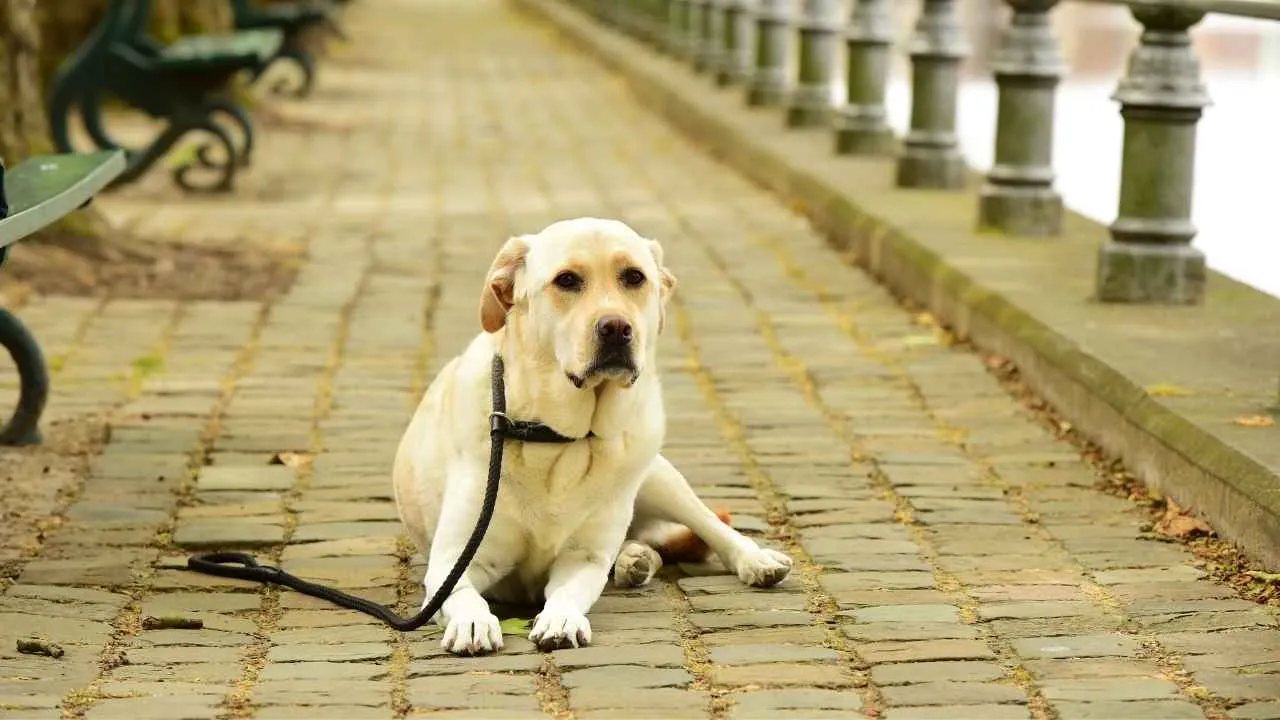
Labrador Retrievers are known for their balanced temperament and boundless enthusiasm, making them one of the most popular breeds for active families. They have the stamina to jog beside a child on a bike while maintaining a steady, non-aggressive pace. Their natural eagerness to please also means they respond quickly to training.
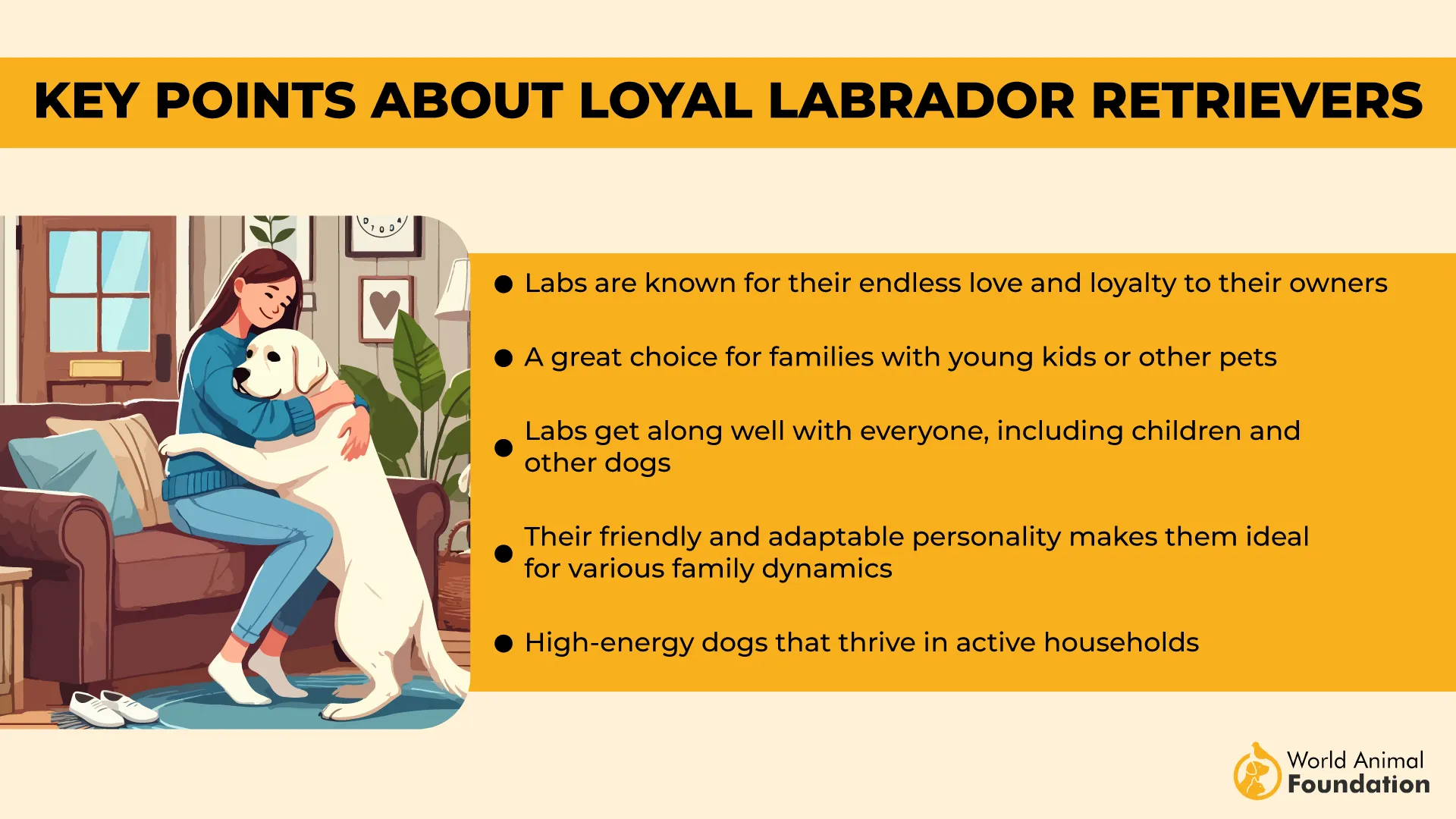
Their muscular build and efficient gait allow them to sustain moderate runs across varying terrain. Labs are among the most athletic and adaptable breeds, capable of excelling in hunting, agility, and recreational activities. They love being part of the action and thrive on interaction.
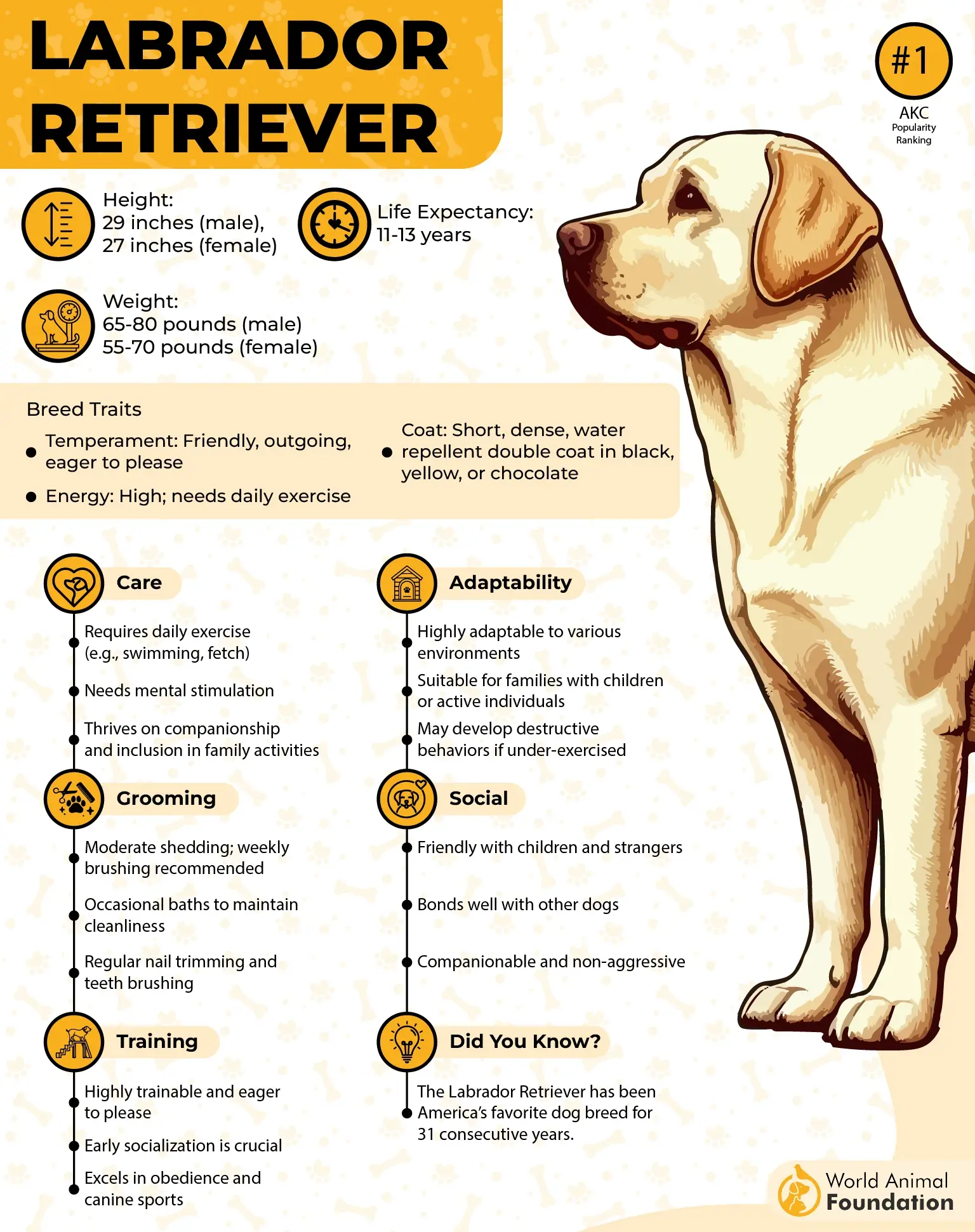
Early exposure to bikes and neighborhood rides builds confidence and focus. These dogs tend to be excitable when young, so leash manners and distraction training are essential. Teaching basic cues like “heel” and “slow” enhances biking safety.
While their dense coat is weather-resistant, weekly brushing keeps it healthy and limits shedding. Labradors also have a strong appetite, so food rewards can support effective training but should be balanced with portion control to prevent obesity.
Quick Tips
Practice leash training before introducing biking
Use verbal cues to manage pace and turns
Limit running in extreme heat due to dense coat
5. German Shorthaired Pointer
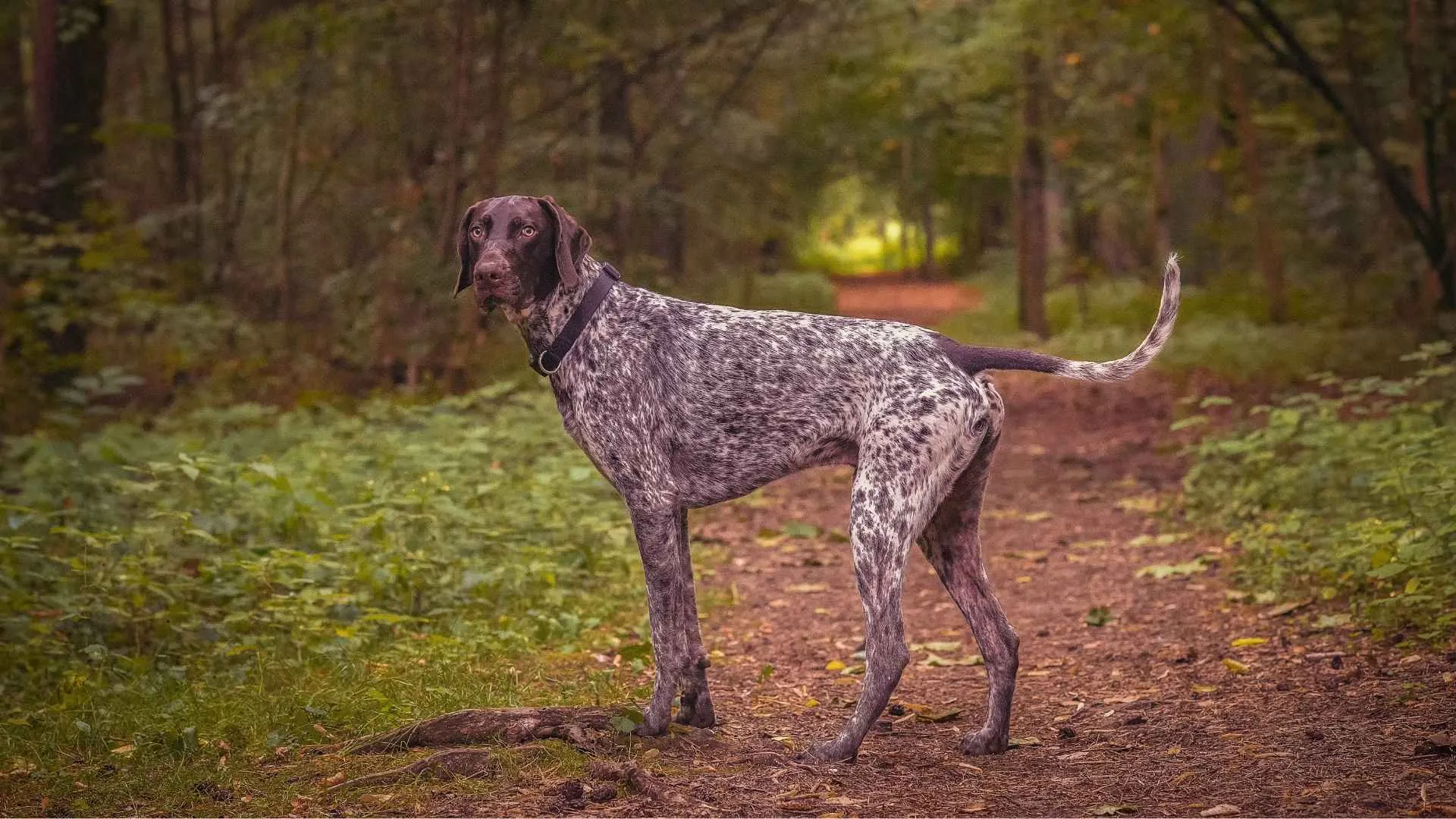
The German Shorthaired Pointer combines high drive with obedience, ideal for families whose children enjoy active play and long rides. They are strong, graceful, and able to run for miles without tiring. Their balanced stride makes them especially suited for steady, controlled biking sessions.
These dogs require significant daily exercise to remain focused and well-behaved. They are known for versatility and stamina, bred to hunt over long distances and remain alert in the field. This endurance easily translates into bike-side companionship.
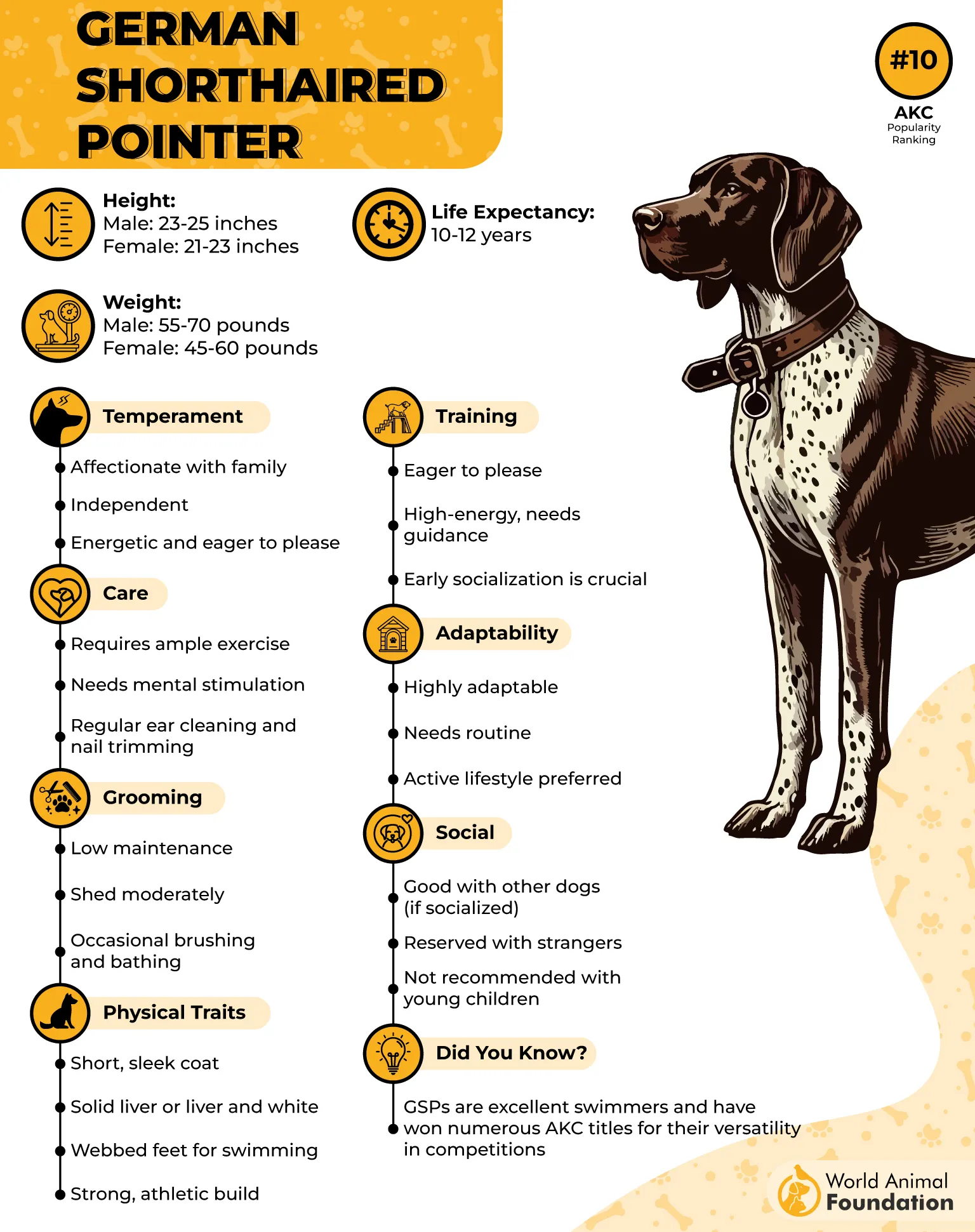
They are affectionate and thrive in homes where they can be close to their people. Social and good with children, they often form close bonds and enjoy shared activities. Without structure, however, they may become overly energetic or unruly.
Short coats make grooming easy, though they benefit from occasional rubdowns to remove loose fur. Owners should provide mental stimulation to prevent boredom, especially on non-biking days.
Quick Tips
Introduce distance gradually to avoid overexertion
Use a hands-free bike leash for better control
Incorporate off-bike scent games to keep their minds sharp
6. Siberian Husky
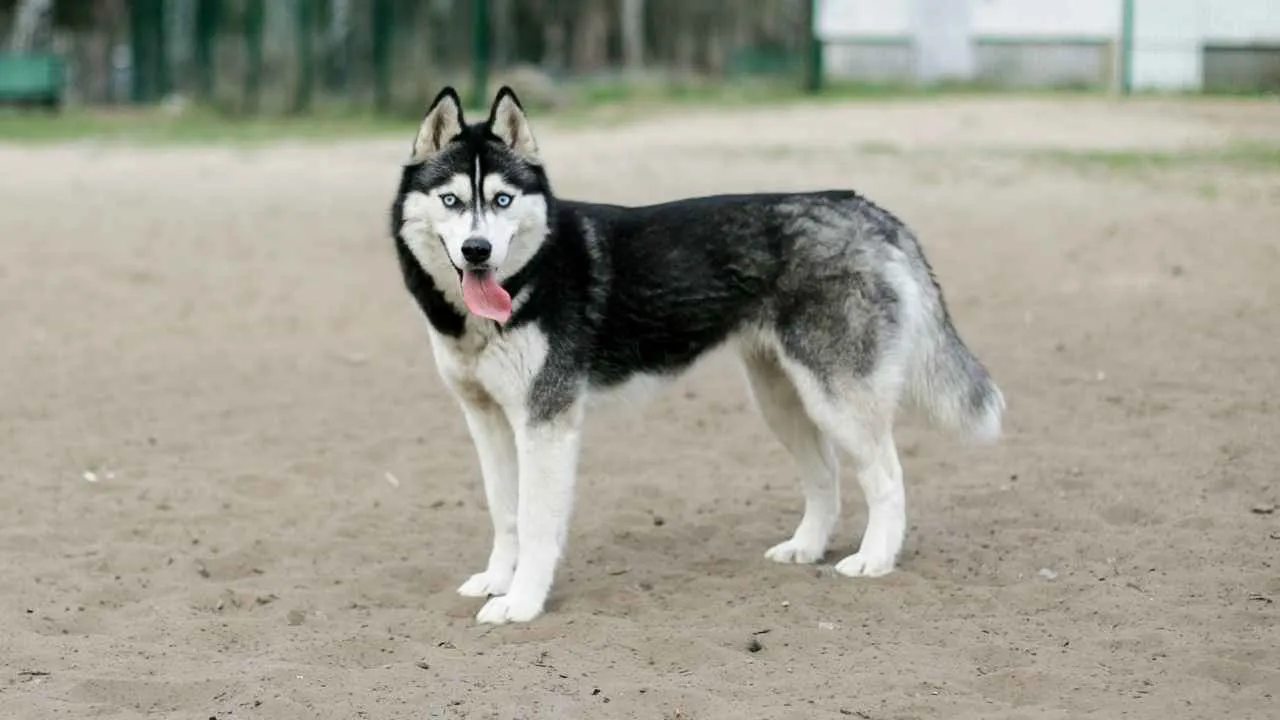
Bred for pulling sleds across long distances, the Siberian Husky is genetically built for endurance and motion. Their light, efficient gait allows them to run for extended periods, and they often enjoy trotting alongside children on bikes. With the right training, they are excellent companions for active families in cooler climates.
These dogs are sociable and energetic but can be independent thinkers. They require consistent leadership and regular mental challenges to remain cooperative. Huskies often do best with older children who understand canine boundaries.
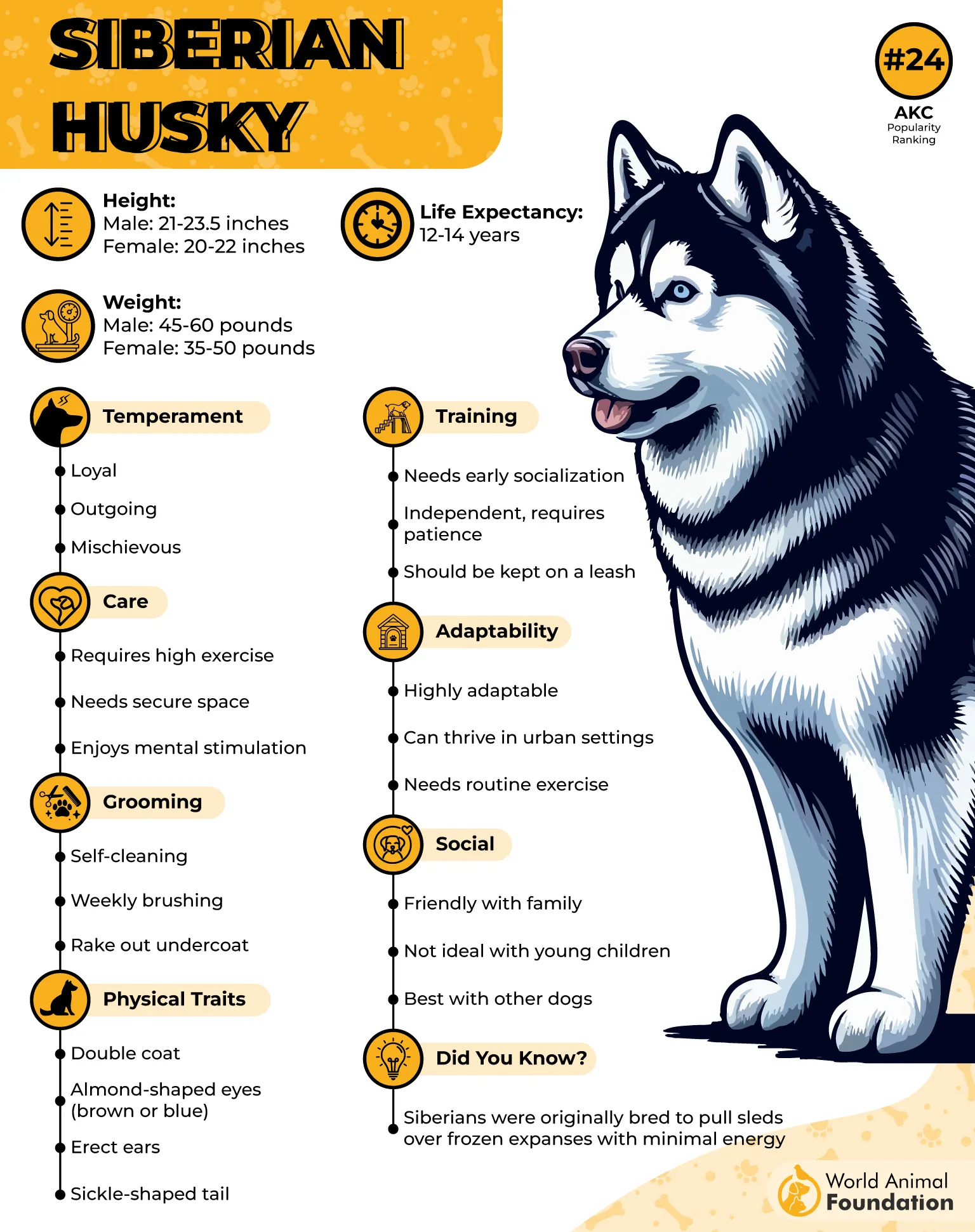
Their thick double coat sheds seasonally and demands frequent brushing, especially in warmer months. Owners should avoid biking during peak heat to prevent overheating. Water breaks and shaded routes are essential during warm weather activity.
Huskies are also known escape artists. Leashes and harnesses should be secure, and recall training is critical. While affectionate, their strong prey drive means off-leash biking is never recommended.
Quick Tips
Bike only in cool temperatures to protect against heatstroke
Strengthen recall and “leave it” commands for safety
Choose secure gear to prevent accidental detachment
7. Vizsla
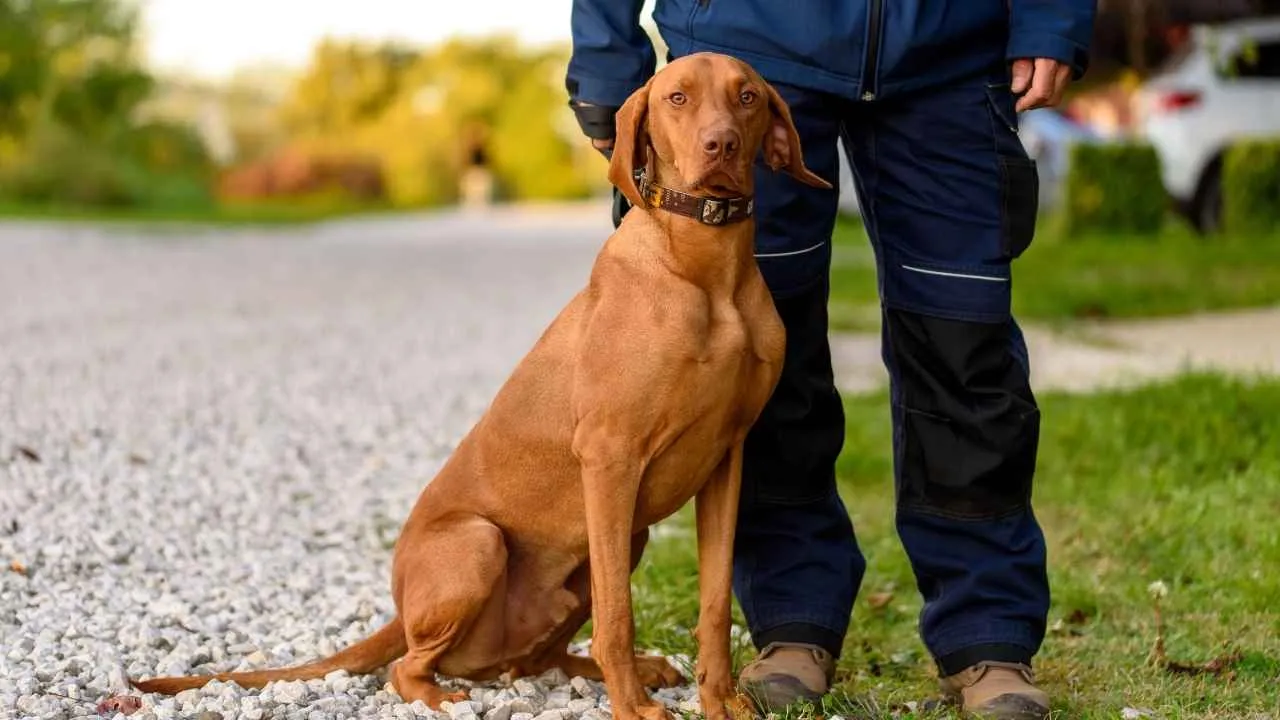
The Vizsla is a sleek, graceful breed built for speed, agility, and endurance. Their lightweight frame and high energy levels allow them to glide effortlessly beside a bike, especially when paired with an active child. Their desire to be close to people makes them reliable running partners with minimal prompting.
Highly affectionate and gentle, Vizslas bond intensely with family members and often shadow them from room to room. They’re among the top breeds for runners due to their stamina and love for movement. They thrive in structured homes that offer consistent routines.
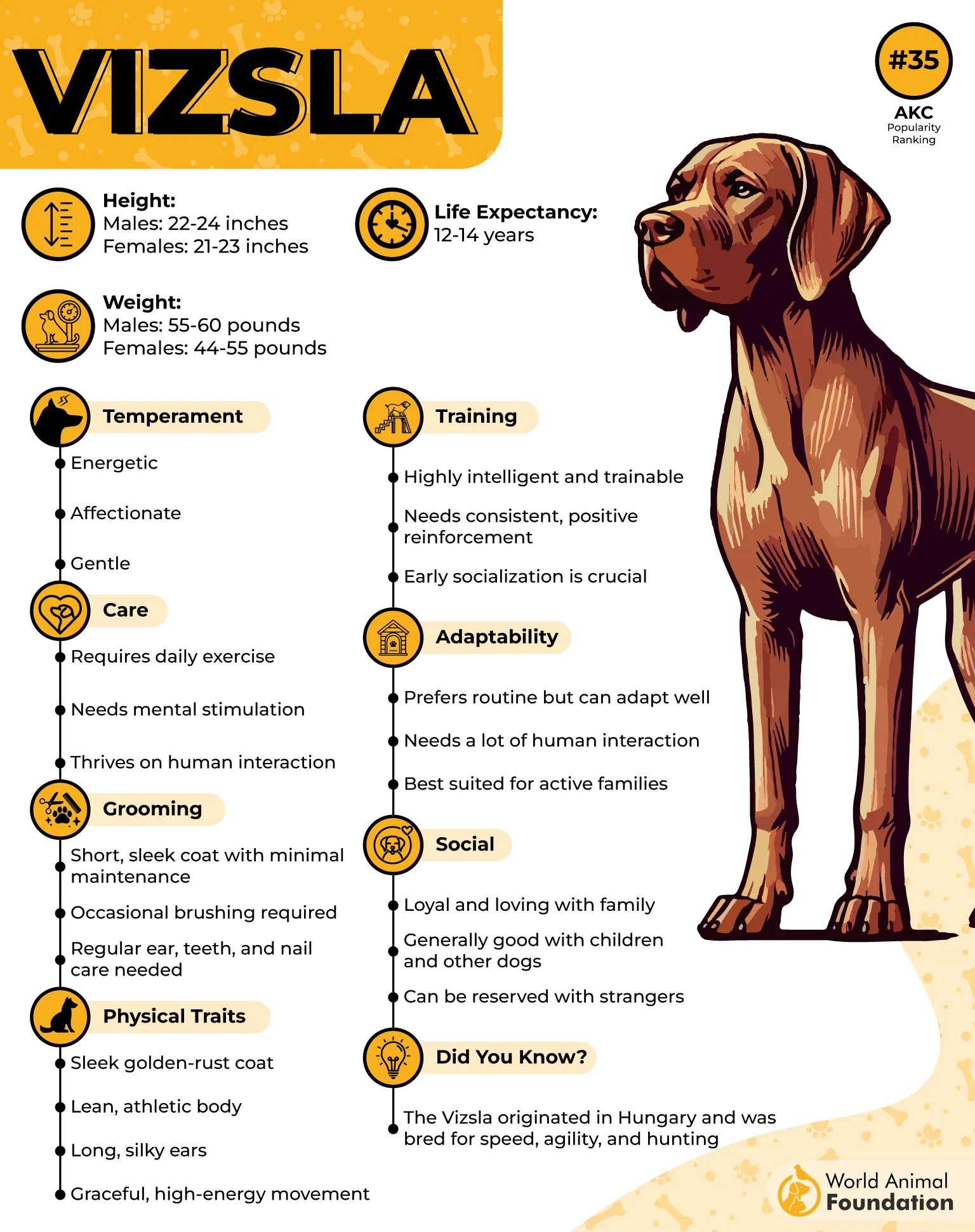
Their short, smooth coat requires minimal grooming, although they do appreciate regular wiping after exercise. They tolerate warmer weather but still need access to water during vigorous activity.
Because of their sensitivity, harsh corrections should be avoided. They respond best to calm, confident guidance. With consistency, they can match pace and direction alongside a bike with ease.
Quick Tips
Use soft training methods to build trust and responsiveness
Stick to routine runs to manage their high energy
Ensure frequent hydration on warm or long rides
Conclusion
Not every dog is suited for running beside a child’s bike, but certain breeds thrive in this role. These dogs don’t just enjoy movement—they have the internal engine, focus, and natural gait to handle steady runs and shifting terrain. For families who value outdoor adventures, the right running companion can transform routine bike rides into shared joy.
Breeds like the Weimaraner and Vizsla excel at endurance running, while others like the Jack Russell Terrier handle quick sprints and shorter rides. Some adapt well to both slow runs and vigorous exercise, making them reliable partners for a range of activities.
Regular physical activity supports both behavior and well-being in athletic dogs. Pet parents who maintain an active lifestyle will find these breeds to be not only good companions but excellent teammates. With the right training, guidance, and awareness of running style, individual dogs can become the perfect companion for long walks, soft trails, or even more demanding runs across rough terrain.


